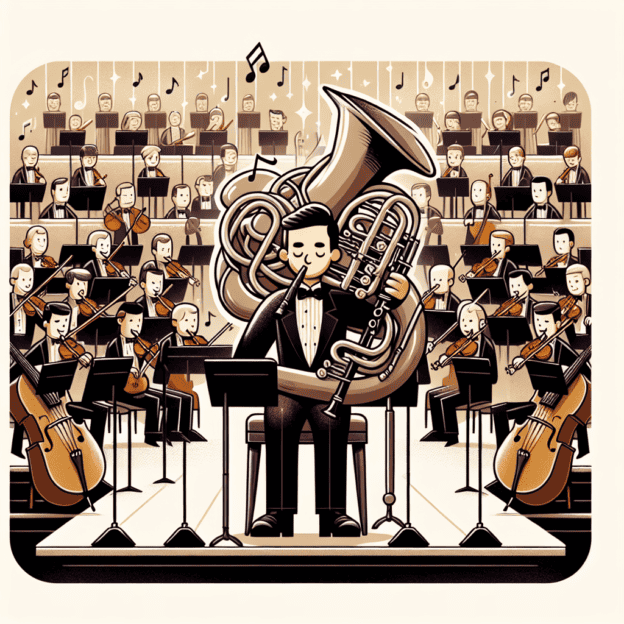The contrabass clarinet stands out as one of the most fascinating and lesser-known members of the clarinet family. Its deep, rich tones offer a unique voice in both orchestral and solo settings, making it an exciting choice for musicians looking to explore new musical territories. This guide explores the unique characteristics of the contrabass clarinet, its applications, and offers tips for playing and maintaining this remarkable instrument.
What is the Contrabass Clarinet?
The contrabass clarinet is a large, woodwind instrument pitched an octave lower than the B? clarinet. It's frequently used in orchestras, concert bands, and contemporary music ensembles, adding to the harmonic richness and depth of sound. While its timbre is often likened to that of the bassoon, it maintains its own distinct clarity and projection.
Key Features of the Contrabass Clarinet
Several features set the contrabass clarinet apart and contribute to its unique sound:
- Range: The singing range typically spans from the written D below bass clef to the C above the bass clef. Skilled players can venture into higher registers with proper technique.
- Size and Construction: The contrabass clarinet usually measures about 6 feet in length, coiled for manageable size. Its design combines warmth and projection. Crafted from grenadilla wood or similar materials, quality construction is key for optimal performance.
- Reed Configuration: The contrabass clarinet uses a larger, thicker reed compared to the standard clarinet, often needing extra care during maintenance.
| Feature | Description |
|---|---|
| Length | Approximately 6 feet |
| Pitch | One octave lower than B? clarinet |
| Material | Grenadilla wood or similar |
| Reed | Larger and thicker than standard clarinet |
The Role of the Contrabass Clarinet in Music
The contrabass clarinet's sound enhances various musical settings:
- In Orchestras: It adds depth to orchestral textures, often enriching woodwind sections. Composers like Gustav Mahler and Igor Stravinsky have used it in their works, showcasing its unique tonal qualities.
- In Contemporary Music: The contrabass clarinet's distinctive sound fits well with contemporary styles, including film music and modern classical compositions, where it's used to create diverse emotional atmospheres.
- In Small Ensembles: The contrabass clarinet blends beautifully within woodwind quintets and chamber groups, providing foundational harmonies and contrasting timbres.
Common Techniques for Playing the Contrabass Clarinet
Mastering the contrabass clarinet takes time and dedication. Here are key techniques to improve your skills:
- Embouchure and Air Support: Like other clarinets, developing a proper embouchure is crucial. Keep a relaxed but firm grip on the mouthpiece. Focus on diaphragmatic breathing to maintain consistent airflow.
- Finger Coordination: The contrabass clarinet has a unique fingering system compared to its smaller counterparts. Get to know the positions and work on smooth transitions between notes.
- Long Tones: Regular practice of long tones builds control and intonation. Aim for a rich, full sound by slowly increasing your breath support duration.
Maintenance and Care
Taking care of your contrabass clarinet is vital for maintaining its performance and longevity. Here are some tips:
- Daily Cleaning: After each playing session, use a wet swab or cloth to remove moisture from the bore. This helps prevent mold and keeps your pads in good shape.
- Mouthpiece Hygiene: Keep your mouthpiece clean by regularly using a mouthpiece brush or warm, soapy water. This prevents bacteria buildup and ensures better sound quality.
- Periodic Inspections: Schedule regular check-ups for your instrument to look for any signs of wear, including pads, corks, and key mechanisms. Professional cleaning by a technician can extend your clarinet's lifespan.
The Importance of Quality Instruments
A high-quality instrument is key to achieving the best sound. Brands like Martin Freres are known for their attention to detail and craftsmanship, which significantly impact performance quality. Investing in a well-made contrabass clarinet will improve your playing experience, offering better response and a richer tone that can inspire you as a musician.
When testing different models, notice how each instrument resonates and performs. Comfort and playability greatly influence how you connect with your music.
Expanding Your Repertoire
As you grow your skills on the contrabass clarinet, try exploring various musical styles. Playing traditional classical works, jazz pieces, and contemporary compositions can broaden your abilities and deepen your appreciation for the instrument.
- Jazz Improvisation: Engaging with jazz lets you explore creative freedom, using the contrabass clarinet's unique timbre to your advantage.
- Classical Solos: Learn notable solo works composed for the contrabass clarinet—these pieces offer great opportunities to refine your technical skills and expressivity.
Playing the contrabass clarinet is a journey filled with exploration and creativity. By applying these techniques, maintaining your instrument carefully, and finding inspiration in your surroundings, you'll discover the extraordinary possibilities this remarkable instrument offers. Stay committed to your craft, and let your love for music guide your progress on the contrabass clarinet.







